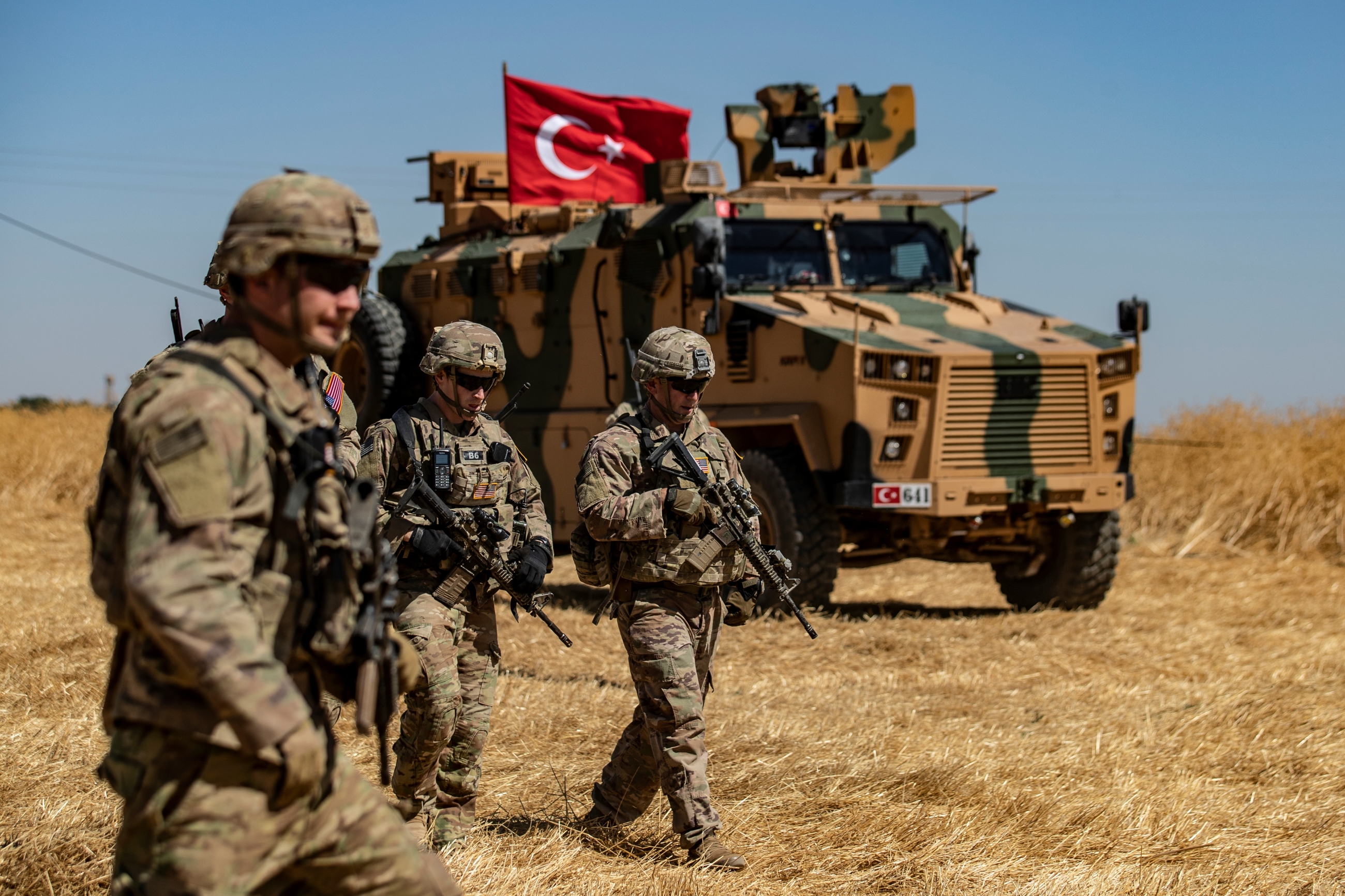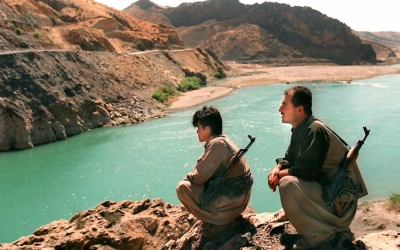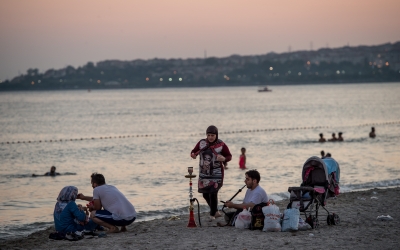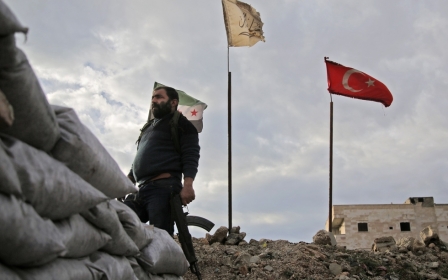Turkey’s Syria move aims to solve several problems but could create new ones

President Donald Trump's decision to withdraw US military personnel from Syria's border with Turkey effectively opens a new chapter in the conflict, leaving Turkey on its own in the so-called "peace corridor" plan in northern Syria.
The fragmented structure of US foreign policy-making at large, the flip-flopping policies and the failure to appreciate Turkey’s strategic priorities resulted in Trump’s abrupt go-ahead to Turkey’s push for a refugee safe zone across its borders with Syria.
The return of refugees
The strong emphasis on the return of Syrian refugees to their homeland represents the new element in Turkey’s Syria policy, reflecting the heated debate on both societal and political levels in Turkey.
There is an increasing narrative within government circles that puts the brunt of blame entirely on the refugees issue for the ruling Justice and Development Party's loss of votes in recent municipal elections.
New MEE newsletter: Jerusalem Dispatch
Sign up to get the latest insights and analysis on Israel-Palestine, alongside Turkey Unpacked and other MEE newsletters
The new element in Turkey’s Syria policy is the strong emphasis on the return of Syrian refugees
Since the polls, the AKP has ceased to be the winning pro-refugee party it once was.
The harsh measures against unregistered Syrian refugees in Turkish cities, new rules in refugee camps and tightened control at border crossings reflect just how sensitive the refugee issue has become. There is more reference in official narrative to curbing the flow of refugees to Turkey to justify the military operations in Syria.
Turkey’s effort to set up a safe haven - or a "peace corridor" - with the US is now a relic of the past, and attempts at cooperation and coordination between the two militaries are not likely to continue in light of this new development.
On Monday, the US military said that it was blocking Turkey from Syria’s north-eastern airspace. Also, Trump warned later that Turkey should not move its forces beyond agreed limits in Syria, without explaining what exactly he means by that.
If Erdogan moves forward with the new plan, a unilateral action in northern Syria was perhaps his only option.
The only option
Trump’s announcement of the pullback of US forces on Sunday created a great deal of concern in Washington for two reasons. First, prominent Democratic figures, and even Republicans like Lindsey Graham, criticised him for betraying the Kurdish allies in Syria.
Second, there is also concern about the future of the battle against the Islamic State group (IS) as Trump shifted responsibility to Turkey, Iran, Russia, the EU and others.
There are about 7,000 IS fighters, including 2,000 foreign militants, and 70,000 family members in over five makeshift camps across all of northeast Syria.
Back in August the US pledged to implement a security mechanism to act as a buffer between the People's Protection Units (YPG) and the Turkish army. The YPG agreed to pull out and remove fortifications from specific border areas. Now this mechanism is no longer available. The YPG-led Syria Democratic Forces (SDF) faces the consequences of Washington's mixed messages.
However, the "abandonment" narrative by the US's Kurdish allies is naive, to say the least. The US administration, after all, made its choice in favour of its NATO ally in the end.
Erdogan aims to establish a "safe zone" extending 20 miles into Syria from the Turkish border. The negotiations with the US began with a five miles corridor but Turkey insists on a 20-mile space that will be controlled by Ankara to keep what it describes as PKK-affiliated Kurdish groups away and to allow for the return of a million refugees to Syria.
During his UN General Assembly speech on 24 September, Erdogan asked for logistical support to build houses and towns for three million refugees in a further expanded safe zone.
Turkey's endgame
Turkey used to justify its military presence in Syria to contain the Democratic Union Party (PYD), a group that has ideological affiliation with Turkey’s outlawed Kurdistan Workers’ Party (PKK); to eliminate IS's last remnants; to stabilise the situation across the border, and most importantly, to enable the return of refugees to Syria.
While Ankara would prefer a voluntary return, forced deportations might be inevitable, considering the high number of refugees Turkey wants to send back to Syria.
Turkey’s safe haven plan aims to achieve two goals: clean the border area of PKK affiliates, and settle a considerable number of refugees. If it works, this could prove that Ankara is capable of managing the refugees and border security issues in particular, and Turkey's Syria problems in general. It will also mean a foreign policy success, which has been in short supply recently.
Ankara would pursue a limited incursion in Tal Abyad and Ras al-Ain on the border, and would postpone a lasting one until November when the planning meeting is held between Erdogan and Trump in Washington.
Although the US withdrawal from the immediate operation area would be significant, there is suspicion about the total US military withdrawal from Syria in Tehran and Moscow.
Expanded sphere of influence
Russia and Iran would be happy to see an end to any sort of US-Turkey mechanism in northern Syria. They will, at the same time, be disturbed by the idea of an expansion of Turkey's sphere of influence and extended stay in Syria.
Both parties would prefer that Ankara strike a deal with Syrian President Bashar al-Assad at least in the north and northeastern Syria. That could explain why Iranian Foreign Minister Javad Zarif referred to the Adana Accord, signed between Damascus and Ankara in 1998, which suggests a framework of cooperation between the two capitals.
Turkey’s military incursion into northern Syria and the 'safe haven' plan would also raise questions about the Idlib arrangement and the Astana process
There will be much speculation about the future of the SDF in northeastern Syria. The main concern would be if they lost their grip over the area, thus allowing for a return of IS fighters. Turkish officials reiterated their commitments to fight IS and prevent its revival in any shape or form.
The SDF’s immediate concern will be about the limited Turkish incursion and the operations conducted by Turkey-backed Syrian opposition forces to establish some control points. The SDF vowed to resist the Turkish incursion, a move that could turn into a guerrilla war against Turkish forces in Syria.
The SDF will, however, need a protector/mediator for themselves for the medium-to-long term depending on the duration and depth of Turkey’s military involvement in the area.
The likely candidate is Russia, which could facilitate a deal between Assad and the SDF. This would eventually lead to the SDF’s subordination to the Assad regime, probably in exchange for a limited level of self-rule, at best.
Syria policy revisited
Erdogan’s safe zone plan is a reflection of his renewed focus on resolving Turkey’s refugee problem. It is also a show of Turkey’s brinkmanship that includes deterrence, military capability and management of proxies altogether.
In its revisited Syria policy, Ankara does not seek a deal with Assad necessarily, but aims to put its own plan into action for addressing two grave Syria-related issues: refugees and security. The long-term implication is to stick to the idea of a Syria without Assad.
Turkey’s military incursion into northern Syria and the safe haven plan, in this respect, does raise questions about the fate of Idlib and the Astana process. The sustainability of this plan will depend on the success of the military operation, the stabilisation of the target zone, and the ability to manage relations with regional and international actors in the Syrian theatre and beyond.
The views expressed in this article belong to the author and do not necessarily reflect the editorial policy of Middle East Eye.
Middle East Eye delivers independent and unrivalled coverage and analysis of the Middle East, North Africa and beyond. To learn more about republishing this content and the associated fees, please fill out this form. More about MEE can be found here.









